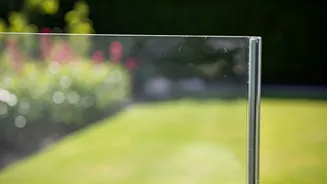Recognizing Early Warning
The initial sign of a relationship starting to drift apart often manifests as reduced communication. When partners once shared everything, there's a shift.
Conversations become less frequent and less detailed, transitioning to transactional exchanges about daily tasks rather than emotional sharing. Remember the times when you and your partner would have long, enriching conversations? This indicates the relationship may need attention. This communication breakdown isn't necessarily about avoiding each other; it can be an unconscious fading of the effort once expended on engaging discussions. Another factor to watch out for is a decline in quality time. Earlier, shared experiences of dates, travels, and even simple evenings together have now become less frequent. The focus shifts to individual pursuits and commitments, thus taking away from the cherished experiences that bond couples together. It might be challenging to maintain shared interests, especially when life gets busy. However, the diminishing amount of time spent together, particularly when not replaced by enriching alternative activities, is often a prelude to a larger issue. When both partners make time to spend together, their relationship is sure to thrive.
Lost Emotional Intimacy
As time goes on, emotional intimacy starts to fade. In the beginning, couples enthusiastically shared their innermost feelings, vulnerabilities, and dreams. Now, there's a growing hesitation to open up. Feelings of vulnerability feel as though they aren't safe to share, leading to a breakdown in trust and understanding. Without emotional intimacy, a relationship loses its depth and profound connection. When emotional vulnerability and openness are scarce, there is a risk of misinterpretation, as partners might begin to misread each other’s behavior, intentions, and needs. This misinterpretation can create conflicts. The absence of emotional openness also affects the physical aspect of the relationship. Physical intimacy thrives on emotional closeness; when the former dwindles, the latter usually follows. The lack of touch, affection, and physical connection can lead to a deeper divide between partners. The physical component of a relationship is a potent expression of love, care, and closeness. A decline may reflect a more significant underlying emotional gap.
Changing Priorities & Goals
When a couple’s paths diverge, the reasons are as varied as the individuals involved. A key indicator of a relationship experiencing difficulty is a misalignment in life goals and priorities. As people evolve, personal ambitions shift, which is a normal aspect of personal development. However, when these changes cause a significant divergence in a shared vision, it can strain the bond. For instance, career ambitions, financial objectives, or even changes in personal values can create disparities that were never there before. Another factor that contributes to this situation includes differences in individual lifestyles. Preferences regarding health, social activities, or daily habits can result in friction. Differing values on raising children or dealing with family matters also contribute to the divide. Conflicts can be inevitable when couples are not aligned regarding significant life decisions, and these clashes might escalate into ongoing disputes if the issues are not addressed.
Conflict & Unresolved Issues
Constant and unresolved conflict is a very harmful indicator of trouble in a relationship. In the early stages, couples often have the ability to handle disagreements with an open mind, using them as opportunities to understand each other better. However, as the gap grows, the way partners address conflicts will change, and conflicts will begin to worsen. Arguments might escalate quickly, and the willingness to compromise might diminish. When there is a lack of conflict resolution, it’s a sign that underlying issues are not being addressed. These issues include unacknowledged resentments, grievances, and unspoken expectations. These issues, if left unaddressed, can build up and lead to significant relationship problems. The absence of conflict resolution skills and the tendency to avoid difficult conversations can be extremely damaging. Over time, the tension escalates, creating a hostile environment that makes it difficult for partners to feel safe and close. Seeking professional help from therapists and counselors might be beneficial in these circumstances.
Reconnecting & Rebuilding
When you are going through the above-mentioned stages, it's essential to put conscious effort towards rekindling the connection. The first step involves open communication. This involves honest and vulnerable discussions about how each partner feels, what needs are not being met, and what they can do to improve the relationship. Active listening is essential, where both partners truly hear what each other is saying without interrupting or judging. Quality time is also important. The intention is to create space in your busy lives for shared activities that you both enjoy. This can include dates, travel, or even simple activities like watching a movie or cooking together. Additionally, reigniting physical and emotional intimacy can be helpful. This involves showing affection and expressing love through touch, words, and actions. Seeking professional guidance from relationship counselors and therapists can provide an impartial space to work through challenges and develop helpful strategies for effective communication. Finally, it’s imperative to remember the reasons why you fell in love with each other in the first place.









